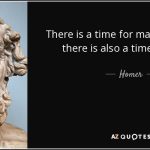#tech #internet #web2 web3 #Defi #AI #blockchain #metaverse #Knightsbridge #bitcoin #crypto
“Web refers to the World Wide Web (www), the internet’s core information retrieval system”–Paul Ebeling
Internet pioneer Tim Berners-Lee is credited with coining the term World Wide Web to refer to the global web of information and resources interconnected through hypertext links.1
KEY TAKEAWAYS
- Web 2.0 and Web 3.0 represent successive, advanced iterations of the original Web 1.0 of the 1990s and early 2000s. Web 2.0 is the current version of the web with which we are all familiar, while Web 3.0 represents its next phase, which will be decentralized, open, and of greater utility.
- Innovations such as smartphones, mobile internet access, and social networks have driven the exponential growth of Web 2.0.
- Web 2.0 has disrupted sectors that fail to integrate the new web-based business model.
- Defining features of Web 3.0 include decentralization; trustlessness and permissionlessness; artificial intelligence (AI) and machine learning; and connectivity and ubiquity.
Web 1.0
Mr. Berners-Lee pioneered the early development of the internet in Y 1990 when he was a computer scientist at European researcher CERN.2 By October 1990, Berners-Lee had written the 3 fundamental technologies that became the foundation of the web, including the 1st webpage editor/browser (WorldWideWeb.app).
By the mid-1990s, the introduction of web browsers ushered in the era of Web 1.0. This was the age of static webpages retrieved from servers. Most internet users at that time were delighted by features such as e-Mail and real-time news retrieval. Content creation was still in its infancy, and users had little opportunity for interactive applications, although this improved as online banking and trading became popular.
Web 2.0
Web 2.0 refers to a paradigm shift in how the internet is used. Over the past 20 yrs, the webpages of Web 1.0 have been replaced by Web 2.0’s interactivity, social connectivity, and user-generated content. Web 2.0 makes it possible for user-generated content to be viewed by millions of people around the world in an instant.
The exponential growth of Web 2.0 has been driven by key innovations such as mobile internet access and social networks, as well as the ubiquity of powerful mobile devices like iPhones and Android-powered devices.
In the 2nd decade of this millennium, these developments enabled the dominance of apps that greatly expanded online interactivity and utility—for example, Airbnb, Facebook, Instagram, TikTok, Twitter, Uber, WhatsApp, and YouTube, to name a few.
The phenomenal revenue growth of these dominant platforms has made many of the Web 2.0-centric companies among the world’s biggest companies by market capitalization, there is an acronym for them: FAANG.
These applications have also spurred the growth of the gig economy, by enabling millions of people to earn income on a part-time or full-time basis by driving, renting their homes, delivering food and groceries, or selling goods and services online.
Web 2.0 has also been disruptive to certain industries to the point of being an existential threat to some of them. These are sectors that have either failed to adapt to the new web-centric business model or been slow to do so, with retail, entertainment, media, and advertising among the hardest hit.
Web 3.0
Web 3.0 represents the next iteration or phase of the evolution of the web/internet and potentially could be as disruptive and represent as big a paradigm shift as Web 2.0 did. Web 3.0 is built upon the core concepts of decentralization, openness, and greater user utility.
Mr. Berners-Lee had expounded upon some of these key concepts back in the 1990s, as outlined below:
- Decentralization: “No permission is needed from a central authority to post anything on the web, there is no central controlling node, and so no single point of failure…and no ‘kill switch’! This also implies freedom from indiscriminate censorship and surveillance.”
- Bottom-up design: “Instead of code being written and controlled by a small group of experts, it was developed in full view of everyone, encouraging maximum participation and experimentation.”
In a Y 2001 paper, Mr. Berners-Lee discussed the concept of what he referred to as the Semantic Web.67 Computers have no reliable way to process the semantics of language (i.e., figure out the actual context in which a word or phrase is used). His vision for the Semantic Web was to bring structure to the meaningful content of webpages and enable software that would carry out sophisticated tasks for users.
Web 3.0 has moved well beyond the original concept of the Semantic Web as conceptualized by Mr. Berners-Lee in Y 2001. This is partly because it is very expensive and monumentally difficult to convert human language with all its subtle nuances and variations into a format that can be readily understood by computers, and because Web 2.0 has already evolved substantially over the past 2 decades.
Defining Features of Web 3.0
Though there is as yet no standardized definition of Web 3.0, it does have a few defining features, they are:
Decentralization: This is a core tenet of Web 3.0. In Web 2.0, computers use HTTP in the form of unique web addresses to find information, which is stored at a fixed location, generally on a single server. With Web 3.0, because information would be found based on its content, it could be stored in multiple locations simultaneously and hence be decentralized. This would break down the massive databases currently held by internet giants like Meta and Google and would hand greater control to users.
With Web 3.0, the data generated by disparate and increasingly powerful computing resources, including mobile phones, desktops, appliances, vehicles, and sensors, will be sold by users through decentralized data networks, ensuring that users retain ownership control.
Trustless and permissionless: In addition to decentralization and being based upon open source software, Web 3.0 will also be trustless (i.e., the network will allow participants to interact directly without going through a trusted intermediary) and permissionless (meaning that anyone can participate without authorization from a governing body). As a result, Web 3.0 applications will run on blockchains or decentralized peer-to-peer networks, or a combination thereof—such decentralized apps are referred to as dApps.
Artificial intelligence (AI) and machine learning: In Web 3.0, computers will be able to understand information similarly to humans, through technologies based upon Semantic Web concepts and natural language processing. Web 3.0 will also use machine learning, which is a branch of artificial intelligence (AI) that uses data and algorithms to imitate how humans learn, gradually improving its accuracy. These capabilities will enable computers to produce faster and more relevant results in a host of areas like drug development and new materials, as opposed to merely targeted advertising that forms the bulk of current efforts.
Connectivity and ubiquity: With Web 3.0, information and content are more connected and ubiquitous, accessed by multiple applications and with an increasing number of everyday devices connected to the web, 1 example of which is the Internet of Things.
Potential and Pitfalls of Web 3.0
Web 3.0 has the potential to provide users with far greater utility, going well beyond the social media, streaming, and online shopping that comprise the majority of Web 2.0 applications consumers use. Capabilities like Semantic Web, AI, and machine learning, which are at the core of Web 3.0, have the potential to greatly increase application in new areas and vastly improve user interaction.
Core features of Web 3.0, such as decentralization and permissionless systems, will also give users much greater control over their personal data. This may help limit the practice of data extraction—which refers to information collected from web users without their consent or compensation—and curb the network effects that have enabled the technology giants to become near-monopolies through exploitative advertising and marketing practices.
However, decentralization also brings with it significant legal and regulatory risks.
Cybercrime, hate speech, and misinformation are already difficult to police and will become even more so in a decentralized structure because of the lack of central control. A decentralized web would also make regulation and enforcement very difficult; for example The Big Q: Which country’s laws would apply to a specific website whose content is hosted in numerous nations globally?
The Bottom Line
Web 1.0 represented the black-and-white movie era, Web 2. the age of color/basic 3D, while Web 3.0 will be immersive experiences in the metaverse.
Just as the 2010s were the decade when Web 2.0 became the dominant force in the global business and cultural landscape, it might be Web 3.0’s turn in the 2020s.
Web 3.0 goes well beyond the Semantic Web envisioned by web pioneer Tim Berners-Lee in Y 2001. Though Web 3.0 uses technologies based on Semantic Web concepts and natural language processing to make user interaction more intuitive, it also has other features, such as widespread use of artificial intelligence (AI) and machine learning, and trustless/permissionless systems, such as blockchain and peer-to-peer networks.
Newer Technologies in Finance Will Be Facilitated by Web 3.0
Because of its Key decentralization feature, Web 3.0 lends itself to technologies such as blockchain, distributed ledger, and decentralized finance (DeFi).
The Knights Platform is an electronic network that links the trading floors of every relevant Crypto Exchange
Market participants, Brokers and market makers can take a price on any of the linked exchanges to find and execute the best price available. Eventually, as they are on boarded, a broker on the floor of one exchange could directly place an order through Knights rather than going through a broker on another exchange.
A tip of my hat to sovereign individuals with satoshis and Bitcoin in cold storage with our firm. Click here
Editor’s Note: The market cycle is a naturally occurring phenomenon, attributable to human psychology, and has repeated itself time and time again, though with some variations, in the lives of nearly all market traded instruments. This cycle repeats itself to varying degrees but is fairly accurate in representing the shift between market sentiments of euphoria and pessimism, and an acknowledgment of this natural phenomenon is Key to profiting from any traded instrument, including Bitcoin. My work shows a return to the mean and then all-time highs in here. Tune out fear.
Have a prosperous day, Keep the Faith!









